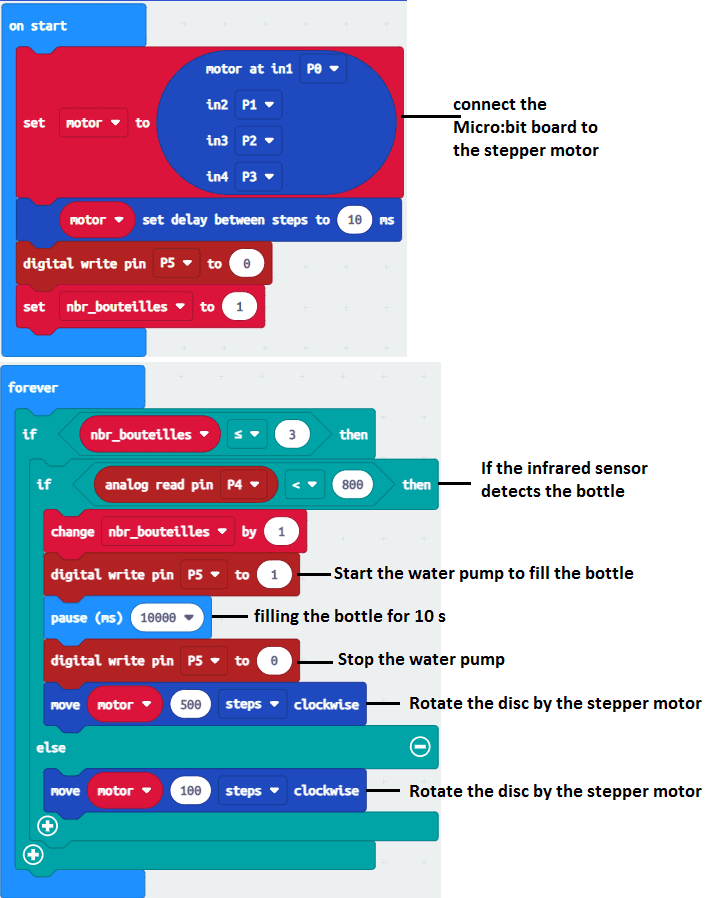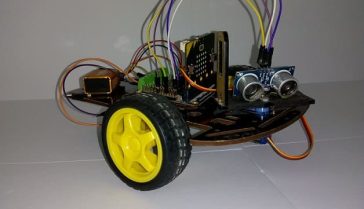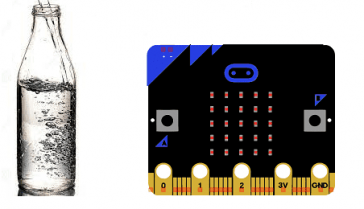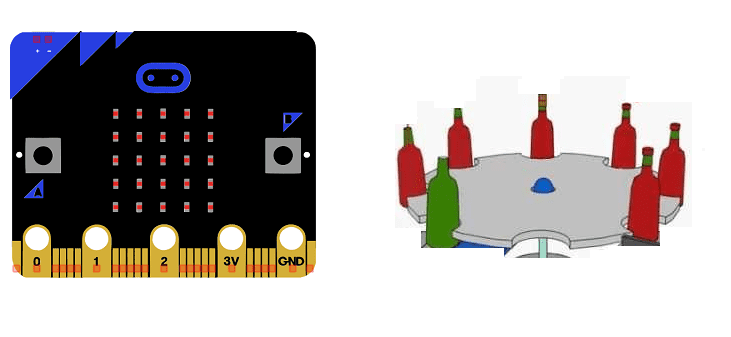

A bottle filling system is a machine or set of machines that are used to fill bottles with a specific liquid or product. These systems can vary in complexity and can include multiple stages such as bottle cleaning, filling, capping, labeling, and packaging. Bottle filling systems are commonly used in industries such as food and beverage, pharmaceuticals, and chemicals.
A bottle filling system controlled by a Microbit is a system in which a Microbit microcontroller is used to control and automate the process of filling bottles. The Microbit, a small computer with built-in sensors and inputs/outputs, can be programmed to control the various stages of the bottle filling process, such as regulating the flow of liquid into the bottles, monitoring the filling level, and controlling the capping and labeling machines. This allows for greater precision and automation in the bottle filling process, and can also make it easier to monitor and adjust the system as needed.
Purpose of project:
In this project, we will build an automatic bottle filling system controlled by the Microbit card.
Operation of the bottle filling system
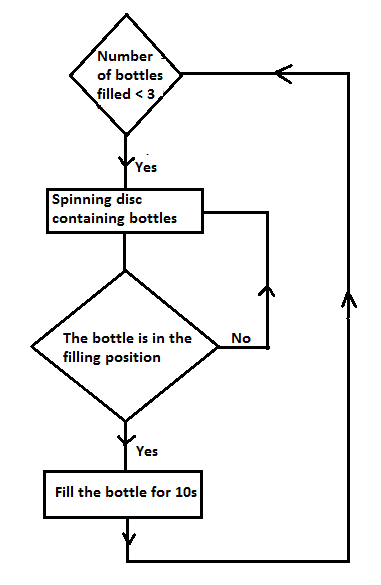
Necessary components
Micro:bit card
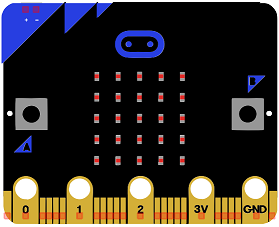
The Micro:bit card, also known as the BBC micro:bit, is a small, programmable microcontroller designed for educational use. It was developed by the BBC in partnership with a number of technology companies in order to promote computer science education in schools. The device is small enough to fit in the palm of a hand and features a range of sensors, inputs, and outputs, including a 5×5 LED matrix display, 2 buttons, an accelerometer, a compass, and Bluetooth connectivity. It can be programmed using a variety of languages, including Microsoft Block Editor, MicroPython, and JavaScript. The device also have features like it can be powered by USB or a battery, and it can be used to control other devices and interact with the physical world.
Infrared sensor KY-032
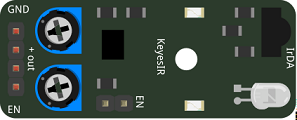
The KY-032 infrared sensor is a device that can be used to detect the presence of an object, such as a bottle, in front of it. It works by emitting infrared light and measuring the amount of light that is reflected back to the sensor. When an object is in front of the sensor, the light is reflected back and the sensor detects the presence of the object.
In a bottle filling system, the KY-032 infrared sensor can be used to detect the presence of a bottle at the filling station. When a bottle is placed in front of the sensor, it sends a signal to the microcontroller (such as a Microbit) that controls the filling process. The microcontroller can then start the filling process and stop it once the sensor detects that the bottle is full. This can help to ensure that bottles are filled to the correct level and prevent overfilling or underfilling.
Relay
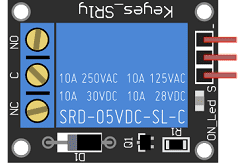
A relay is an electronic switch that is used to control the operation of the water pump. It works by using a small current to operate a larger current, allowing the water pump to be controlled by Microbit or other low-power device.
In a bottle filling system, the relay for the water pump can be controlled by Microbit to start and stop the flow of water into the bottles. The Microbit can send a signal to the relay to turn the water pump on when a bottle is detected at the filling station, and turn it off when the bottle is full or when the filling process is complete.
The relay can also be used to control the flow of water to the pump. This can allow for greater control over the flow rate of water into the bottles, which can help to ensure that the bottles are filled to the correct level and prevent overfilling or underfilling. Relays are also useful in this application because they can handle high voltage and high current loads which is required for water pumps, thus ensuring the safety of the system and the microcontroller.
28BYJ-48 Stepper motor
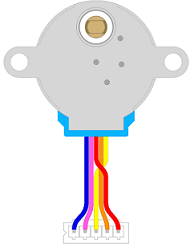
The 28BYJ-48 stepper motor is a small, inexpensive stepper motor that can be used in a variety of applications, including as a part of a bottle filling system. A stepper motor is a type of electric motor that can be controlled to rotate in precise increments, allowing for precise control of the motor’s position and rotation.
In a bottle filling system, the 28BYJ-48 stepper motor can be used to control the movement of the bottle as it moves through the filling process. It can be used to move the bottle from the loading station to the filling station, and from the filling station to the capping station. The stepper motor can be controlled by a microcontroller (such as a Microbit) to rotate in precise increments, allowing for precise control of the bottle’s position during the filling process.
The stepper motor can also be used to control the movement of the capping machine, which is responsible for applying the cap to the bottle after the filling process is complete. This can help to ensure that the cap is applied correctly and tightly, preventing leaks and contamination.
The 28BYJ-48 stepper motor is known for its low cost and high efficiency, making it a popular choice for use in small-scale projects such as a bottle filling system. However, it is important to note that the motor has a relatively low resolution and torque which can limit its accuracy and performance in some applications.
UNL2003 module
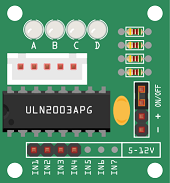
The UNL2003 is a type of integrated circuit (IC) that is commonly used as a stepper motor driver. It is a bipolar stepper motor driver IC that can be used to control the operation of a stepper motor, such as the 28BYJ-48.
The UNL2003 is designed to control the current flowing through the windings of a stepper motor, allowing for precise control of the motor’s position and rotation. It can be used to drive a stepper motor in either full-step or half-step mode, which can provide a higher resolution of movement. The UNL2003 can also be used to control the speed and direction of the stepper motor, allowing for precise control of the motor’s movement.
In a bottle filling system, the UNL2003 can be used to control the movement of the 28BYJ-48 stepper motor, allowing for precise control of the bottle’s position during the filling process. It can be controlled by a microcontroller (such as a Microbit) to rotate the stepper motor in precise increments, ensuring accurate and consistent movement of the bottle throughout the filling process.
The UNL2003 is known for its low cost, high efficiency, and ease of use. It is widely used in small scale projects such as a bottle filling system, robotic and automation projects.
GPIO expansion board
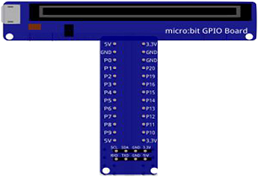
A GPIO expansion board for Microbit is an add-on board that can be used to add additional input/output (I/O) pins to a Microbit microcontroller. These pins can be used to connect a wide variety of sensors, actuators, and other devices to the Microbit, allowing for greater control and flexibility in the system.
GPIO expansion boards for Microbit typically come with a set of headers that connect to the Microbit and provide access to the additional I/O pins. Some expansion boards also come with additional components such as voltage regulators, LEDs, and push buttons that can be used to add more functionality to the system.
In a bottle filling system, a GPIO expansion board for Microbit can be used to connect sensors like infrared sensor, relay to control the operation of a water pump, or a stepper motor driver IC such as UNL2003 to control the movement of the bottle during the filling process. It can also be used to connect other peripherals like LCD screens or other actuators like solenoids or servo motors.
These expansion boards are widely available and can be used to expand the capabilities of a Microbit, making it a versatile and powerful tool for a wide variety of projects, such as a bottle filling system. Some popular expansion boards include the Pimoroni Pico, Adafruit PXT- Microbit, and the Kitronik Inventor’s Kit for Microbit.
support
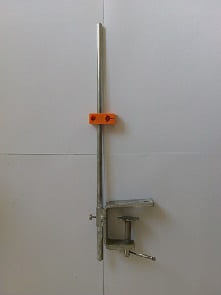
In a stepper motor bottle filling system, the disc would likely be supported by mechanical components such as bearings or bushings to allow it to rotate freely. The support structure would also need to securely hold the disc in place and keep it aligned with the other parts of the filling mechanism. Depending on the design of the system, the disc may be supported by a shaft or other rotating element, which would be connected to the stepper motor to allow for precise rotation. The support structure may also include additional components such as seals to prevent leakage of the liquid or other materials being dispensed.
Disc
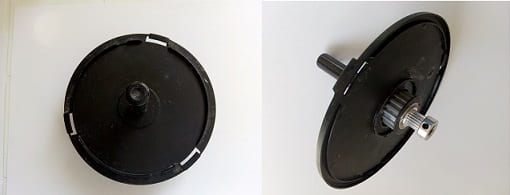
In a bottle filling system, the disc may be an important component of the mechanism that controls the flow of liquid or other materials into the bottles. It may be used to regulate the flow of liquid by opening or closing a valve, or it may be used to dispense a specific amount of liquid or material into the bottle. The disc may be connected to the stepper motor or other actuator, which would allow for precise movement and control of the disc. The disc could be made of stainless steel, plastic or other materials that are suitable for contact with liquids and easy to clean. The disc could be shaped like a sector and be rotated by stepper motor to control the flow of the liquid or other materials.
timing belt
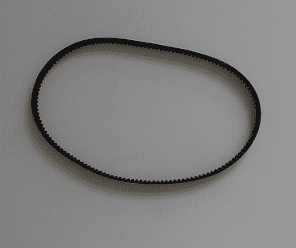
A timing belt is a mechanical component that is used to transmit power and synchronize the rotation between two shafts. In a stepper motor bottle filling system, a timing belt could be used to connect the stepper motor to the disc, which controls the flow of liquid or other materials in the filling mechanism.
The timing belt would be used to ensure that the disc rotates at the same speed and in the same direction as the stepper motor. This would allow for precise and accurate control of the filling process, as the stepper motor would be able to move the disc in small, precise increments. Timing belt would be chosen based on the specifications of the stepper motor and the disc, such as torque requirements, rotational speed, and operating temperature range.
bottles

12V water pump
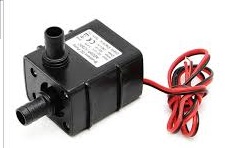
A 12V water pump is an electric pump that runs on a 12-volt DC power source and is used to pump water. These pumps are commonly used in a variety of applications such as boats, RVs, and off-grid systems. They are also used in industrial and agricultural settings.
Battery of 9V
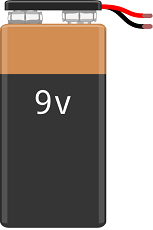
A 9V battery is a type of primary cell, or non-rechargeable battery, that is commonly used in a variety of electronic devices such as smoke detectors, remote controls, and portable radios. The standard size for a 9V battery is about 48.5 mm (1.91 inches) in length and 26.5 mm (1.04 inches) in width and 17.5 mm (0.69 inches) in height.
Test plate

A test plate is a type of device that is used to test the functionality of other devices or systems. It can be used to test a variety of different components such as sensors, actuators, and electronic circuits. The design and construction of a test plate will depend on the specific components or systems being tested.
Connecting wires

Wires in a robotic system are used to connect and transmit electrical signals between different components of the robot. These components can include sensors, actuators, motors, and the microcontroller, such as an Arduino. The wires in a robotic system are typically made of copper and are insulated to prevent electrical interference and short circuits.
The type of wires used in a robotic system depends on the specific application and requirements of the robot. For example, a robot that requires high-current power transmission may use thicker, high-gauge wires, while a robot that requires a high degree of flexibility and movement may use thinner, more flexible wires.
Mounting the Microbit board and the KY-032 Infrared sensor
The infrared sensor is used to detect if there is a bottle in the right position to fill it.
-
We connect the VCC pin of the sensor to the 3.3V pin of the Micro:bit
-
We connect the GND pin of the sensor to the GND pin of the Micro:bit
-
We connect the OUT pin of the sensor to the P4 pin of the Micro:bit
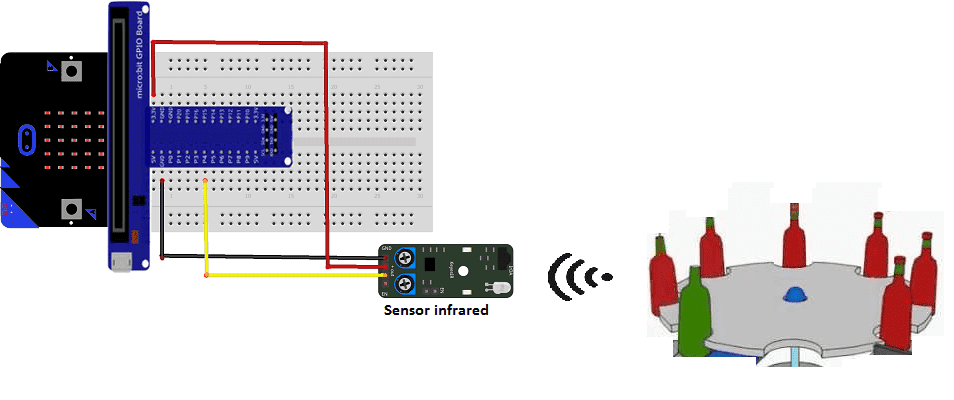
Mounting the Microbit board with the stepper motor
The role of the stepper motor is to turn the disc containing the bottles
-
We connect the UNL2003 module to the stepper motor
-
We connect the IN1 pin of the UNL2003 module to the P0 pin of the Micro:bit
-
We connect the IN2 pin of the UNL2003 module to the P1 pin of the Micro:bit
-
We connect the IN3 pin of the UNL2003 module to the P2 pin of the Micro:bit
-
We connect the IN4 pin of the UNL2003 module to the P3 pin of the Micro:bit
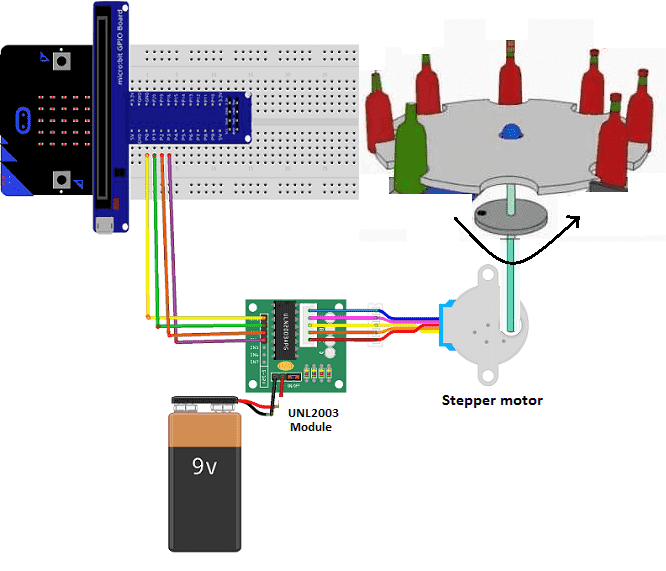
Mounting the Microbit board with the water pump
The relay is the intermediate component between the Micro:bit board and the water pump. It allows the Micro:bit board to control the water pump.
The role of the relay is to start or stop the pump responsible for filling the bottles.
-
We connect the (-) terminal of the relay to GND pin of Microbit
-
We connect the (+) terminal of the relay to 3.3V pin of Microbit
-
We connect the (S) terminal of the relay to P5 pin of the Microbit
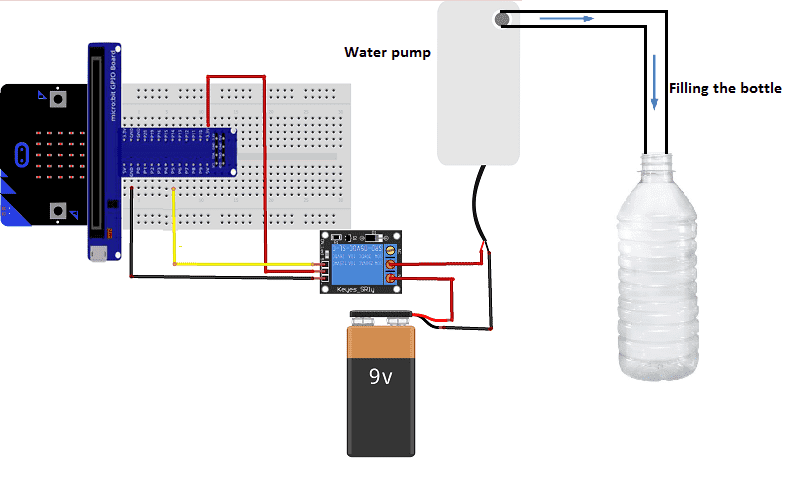
Makecode program
Here is the makecode program which allows to control the automatic bottle filling system by the Microbit card.
